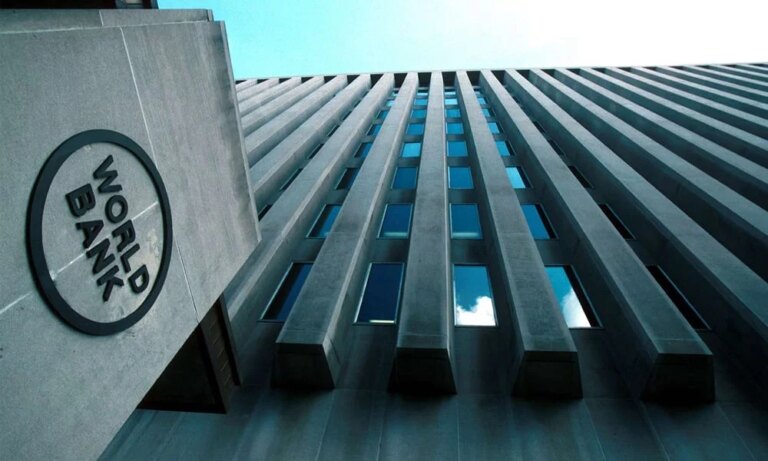ISLAMABAD: The World Bank has cautioned that Pakistan’s exports as a share of GDP are steadily declining, leaving the country’s economy heavily reliant on debt and remittance-fueled consumption. The Bank estimates that Pakistan’s untapped export potential stands at nearly USD 60 billion, restrained by high tariffs, regulatory hurdles, expensive energy, and weak logistics infrastructure.
In its latest report, “Pakistan Development Update,” the World Bank revealed that exports as a share of GDP have fallen from an average of 16 percent in the 1990s to just 10.4 percent in 2024. This sustained decline has made growth unsustainable and vulnerable to recurring boom-bust cycles.
The report also noted that Pakistan’s export performance — once stronger than Bangladesh and India — now lags behind both, as well as the averages for low- and middle-income countries (LMICs) and upper-middle-income countries (UMICs). The widening “export gap,” or the difference between actual and potential exports, underscores deep structural weaknesses in Pakistan’s trade competitiveness.
Growth Outlook and Export Potential
The World Bank also downgraded Pakistan’s GDP growth projection to 2.6 percent, reflecting persistent macroeconomic imbalances. It said that based on Pakistan’s size, development level, and geographic access to major markets, closing the $60 billion export gap would require doubling exports’ share in GDP to reach the average level of UMIC economies.
To achieve this, the Bank urged Pakistan to adopt broad-based structural reforms, including a market-determined exchange rate, improved trade finance systems, better logistics and compliance mechanisms, deeper trade agreements, and investment in digital and energy infrastructure to boost export-led growth.
Exchange Rate and Financial Market Reforms
The World Bank emphasized the need for a deep and transparent interbank foreign exchange market without State Bank of Pakistan (SBP) intervention. It recommended allowing market forces to determine the exchange rate, publishing detailed interbank transaction data, and phasing out ad hoc currency measures to enhance credibility and investor confidence.
Tariff and Trade Policy Reforms
The report commended Pakistan’s five-year National Tariff Plan (FY2026–FY2030), which aims to cut the average tariff rate from 20.2 percent to 9.7 percent by 2030. If fully implemented, Pakistan would join the ranks of the five most ambitious LMIC tariff reformers, alongside Vietnam and Cambodia, and among the top 10 globally for tariff reduction over the past two decades.
However, the Bank warned that tariff reforms alone would not suffice, stressing that export growth depends on trade facilitation, access to financing, and a competitive exchange rate regime.
Digital Export Performance Remains Weak
Despite progress in the IT sector, Pakistan’s digitally delivered exports account for only 10 percent of total exports, representing just 0.1 percent of the global digital services market — far behind India (5.8%) and Indonesia (0.2%).
While Pakistan ranks as South Asia’s second-largest IT exporter after India, with annual exports of over USD 2.9 billion, its global market share remains just 0.3 percent, highlighting enormous untapped potential.
The report pointed out that exporters continue to face high broadband costs, poor internet speeds, and unequal digital access across regions. These constraints are worsened by weak digital infrastructure, limited fiber-optic coverage, and fragmented regulatory frameworks governing content and fiber expansion.
The Way Forward
Anna Twum, co-author of the report, acknowledged the government’s recent steps — including the approval of the National Tariff Policy — as “important progress” toward reducing input costs. However, she cautioned that tariff reform must be supported by broader measures to sustain export growth.
“Pakistan must ensure a market-determined exchange rate, strengthen trade finance, enhance trade facilitation, and expand access to export markets,” Twum stated.
The World Bank’s findings underline the urgency for structural reforms, export diversification, and digital modernization if Pakistan is to unlock its vast export potential and shift from consumption-driven growth to a sustainable, export-led economic model.
Images are for reference only.Images and contents gathered automatic from google or 3rd party sources.All rights on the images and contents are with their legal original owners.

